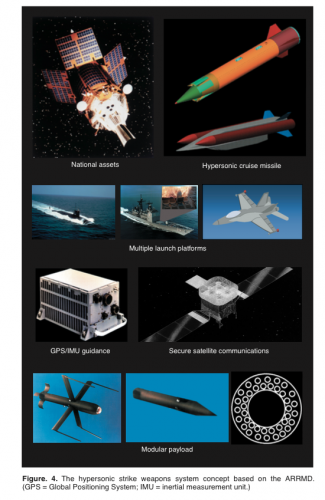- Joined
- 1 May 2007
- Messages
- 2,510
- Reaction score
- 1,674
While looking for something else, I found this :-
Why and Whither Hypersonics Research in the US Air Force
Abstract
"This report summarizes the deliberations and conclusions of the 2000 Air Force Scientific Advisory Board (SAB) study on Why and Whither Hypersonics Research in the US Air Force. In this study the committee describes the operational requirements of a hypersonic system and presents a research program for air breathing hypersonics to meet the operational requirements. We define a program resulting in an operational air breathing hypersonic space launch system in about 2025. This program includes several exit ramps and potential options. The exit ramps would lead to either an operational rocket-based reusable launch system or continuation of the expendable course the Air Force is currently on. A Red Team Panel was part of the study team and provides alternatives to the air breathing hypersonic systems to meet the operational requirements. The study results represent an outstanding collaboration between the scientific and operational communities and among government, industry, and academia. The Study committee wishes to thank the many individuals who contributed to the deliberations and the report, as listed in Appendix A. In addition to Scientific Advisory Board members, many ad hoc members devoted their time. The team would also like to thank all the organizations that gave presentations to our panel and hosted us as listed in Appendix D. The Air Force Academy provided outstanding technical writers Capt Susan Hastings, Capt David Jablonski, and Capt Matthew Murdough who provided fantastic support in preparing this report. Lt Col Dan Heale from the Air Force Research Laboratory served as an outstanding executive officer for the Investment Panel as well as provided a liaison role with Air Force Materiel Command."
http://handle.dtic.mil/100.2/ADA387782
check out Appendix F and G........
Cheers,
Robin.
Why and Whither Hypersonics Research in the US Air Force
Abstract
"This report summarizes the deliberations and conclusions of the 2000 Air Force Scientific Advisory Board (SAB) study on Why and Whither Hypersonics Research in the US Air Force. In this study the committee describes the operational requirements of a hypersonic system and presents a research program for air breathing hypersonics to meet the operational requirements. We define a program resulting in an operational air breathing hypersonic space launch system in about 2025. This program includes several exit ramps and potential options. The exit ramps would lead to either an operational rocket-based reusable launch system or continuation of the expendable course the Air Force is currently on. A Red Team Panel was part of the study team and provides alternatives to the air breathing hypersonic systems to meet the operational requirements. The study results represent an outstanding collaboration between the scientific and operational communities and among government, industry, and academia. The Study committee wishes to thank the many individuals who contributed to the deliberations and the report, as listed in Appendix A. In addition to Scientific Advisory Board members, many ad hoc members devoted their time. The team would also like to thank all the organizations that gave presentations to our panel and hosted us as listed in Appendix D. The Air Force Academy provided outstanding technical writers Capt Susan Hastings, Capt David Jablonski, and Capt Matthew Murdough who provided fantastic support in preparing this report. Lt Col Dan Heale from the Air Force Research Laboratory served as an outstanding executive officer for the Investment Panel as well as provided a liaison role with Air Force Materiel Command."
http://handle.dtic.mil/100.2/ADA387782
check out Appendix F and G........
Cheers,
Robin.


